










           |
original text: Andre Gide, The Counterfeiters (1927); artwork/video composition: Ben Gerstein (2003/2010); initial digital rendering: Greg Haworth (2010); music: Gyorgy Ligeti, Lux Aeterna (1966) Back in 2003, by myself at work in an office with a big xerox machine and some serious time to 'kill', I began exploring repeated 200% enlargements on various images, zooming further and further in to the abstractions I was finding. And to no end. Each picture held certain abstracting shapes implicit to it, setting the stage for a unique visual journey guided by the placement of the paper on the glass in position to these various forms as they came into view. Hard to say if at some point it's just the xerox machine generating these abstractions, because every picture I tried this with produced something different. The clusters of images which come into view as the work progresses are all seemingly gathered together due to forces found within the initial composite image. But also to be considered is how the ink is released from a toner cartridge through air, intercepted in motion by the paper, mid-flight, each time producing infinite little subtleties, inconsistencies... So in this particular case, I chose a page from Andre Gide's novel "The Counterfeiters", and created a 162-page booklet of this journey enlarging image into image... At the start one can even see how the ink hit the page at the edge of the letter 'b'. After a couple hours of doing this, I realized it could have gone on forever, and so, tired, almost dizzy, I ended the series by enlarging into the black. For a while afterwards I kept imagining things in front of me fractalizing in this way, as would most people I'm sure after such a process. It was quite surreal... A couple of years later a guy by the name of Greg Haworth, who'd been working as a photocopiest for quite some time, came across my work on the web and asked if I'd sell him a copy of one of these large booklets going into the 'b' of 'trombone'. I happily obliged, grateful for his curiosity. I then showed him a low quality video I'd made speeding up a video of me turning the pages of the booklet to get a sense of animation from image to image, and we discussed ways of going about making a better one, but that was about it, and we then proceeded on our separate ways. A few years later, out of the blue, I received an excited letter from him when coincidentally just the day before I had been reading this Gide novel again and contemplating the xerox experiments and more that could be done with it. He told me how he now had a high-capacity scanner which can be fed entire stacks of paper and that he'd done this with my xerox book and rendered a 3-dimensional video. I was beyond thrilled. I later converted it into a higher quality file, made it go in reverse after reaching the end, and then added music by Gyorgy Ligeti. Greg's own upload of this can be seen here, and this is his story about what happend: "The letter 'b' of trombone was created by Ben Gerstein, using a xerox copier as his Medium. His subject matter is a page from the book "The Counterfeiters" by Andre Gide. Of special significance is the word "trombones" in the text, as Ben Gerstein is himself a trombonist. With each copy, on each page, the letter evolved. The result was a stunning fractal pattern, generated by the copier itself, lasting for around 165 pages. Clever positioning of each page allows us to delve ever deeper into the pages on our journey through the letter B. When I originally discovered Ben's work, I was just searching "xerox" on myspace. He had uploaded a video of the pages being flipped. I've worked in a copy shop for four years and I knew it would be a great book to keep on the coffee table at work, so he sent it to me. Skip ahead I think... 2 years. I dig this thing out of the boxes from my old house. It is still a timeless piece. I wanted to breathe new life into it, so I set out on a quest to do so, scanning all the pages on a high-capacity scanner. I took all the images and went 3d. Each page became a plane, scaled to fit squarely on top of the page before. When all was set, I animated a camera to pan through each plane, and finally rendered it. Before I saw the rendered video, I had only known it as single frames. I wanted to finally visualize it as it begs to be seen. I confess I never showed Ben or let him know what I was doing until it was all but done. And it was just serendipitous that he had been thinking about exactly this book during the same days that I was working on it. He is very excited, as am I, with how this all has ended. With his express permission I now show it to the world. We hope you enjoy 'b' of trombone and we hope you find yourself captured by its mystery." 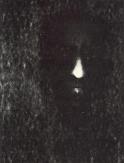
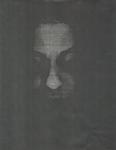
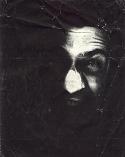
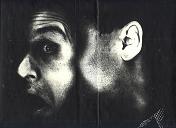 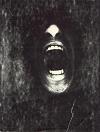
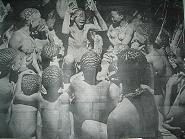
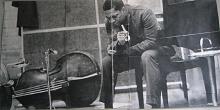
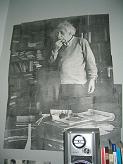 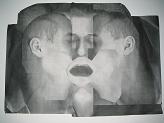
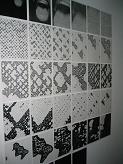 
|